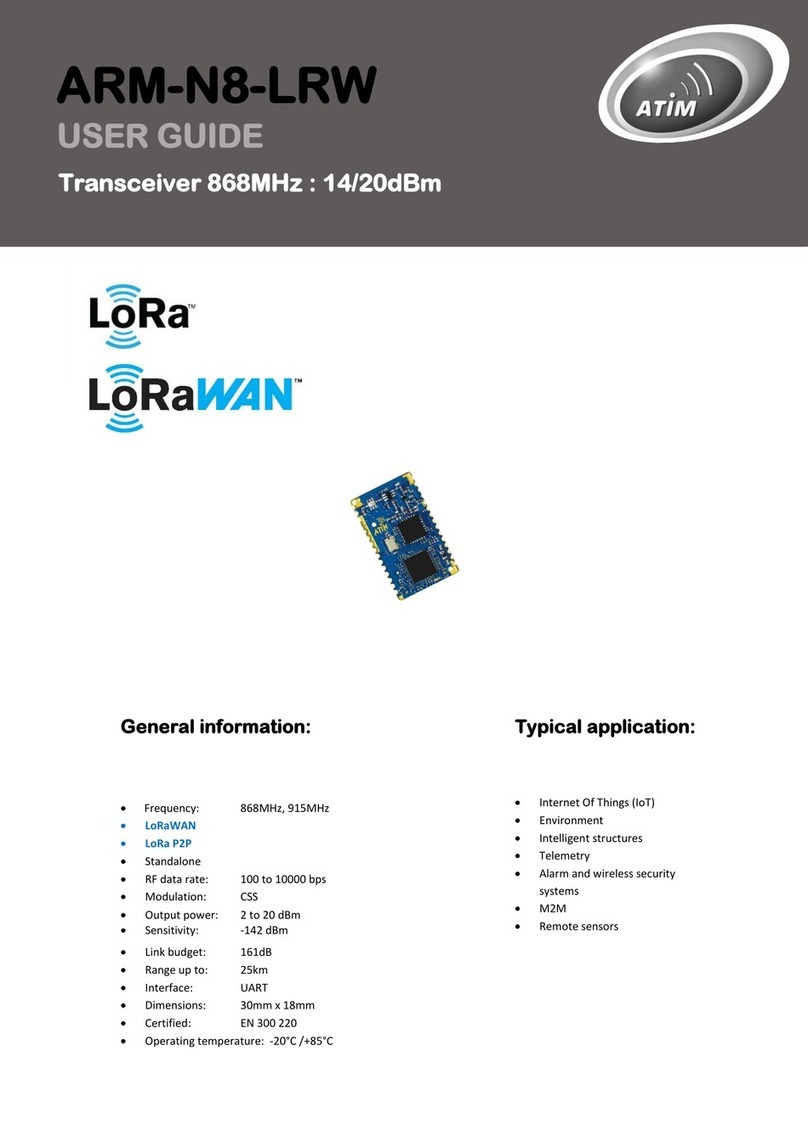2
ATIM_ARM-N8-LD-LP_UG_EN_V2.0
TABLE OF CONTENTS
Document version history............................................................................................................................... 4
Disclaimer........................................................................................................................................................ 4
Trademarks and copyright .............................................................................................................................. 4
Declaration of compliance .............................................................................................................................. 5
Environmental recommendations .................................................................................................................. 5
Environment ........................................................................................................................................5
Radio.................................................................................................................................................... 6
Radio regulations ............................................................................................................................................ 7
i. Context....................................................................................................................................................... 7
ii. Information about the regulation and the conformity ..............................................................................7
Generalities..................................................................................................................................................... 9
i. Presentation...............................................................................................................................................9
ii. ARM range and ACW range........................................................................................................................ 9
iii. Soldering & Environment ........................................................................................................................... 9
Technical features......................................................................................................................................... 10
i. Electrical and mechanical characteristics................................................................................................. 10
ii. Dimensions............................................................................................................................................... 10
iii. Pins........................................................................................................................................................... 11
iv. Consumption features.............................................................................................................................. 11
v. Link interfaces .......................................................................................................................................... 12
vi. Firmware update...................................................................................................................................... 12
vii. RF features ............................................................................................................................................... 13
viii. Delay......................................................................................................................................................... 13
ix. Memory.................................................................................................................................................... 14
Hardware integration.................................................................................................................................... 15
i. Power supply............................................................................................................................................ 15
ii. Impedance of the antenna adaption........................................................................................................15
iii. Print and ground plan............................................................................................................................... 15
AT command configuration........................................................................................................................... 16
Test modes.................................................................................................................................................... 17
i. Ping-pong mode (ATT00 and ATT01)........................................................................................................17
ii. Continuous reception mode (ATT02) ....................................................................................................... 17
iii. Pure carrier (ATT04) ................................................................................................................................. 17
iv. RSSI reading (ATT0A) ................................................................................................................................ 17
v. Version ..................................................................................................................................................... 18
Interfaces ...................................................................................................................................................... 19
i. Selection................................................................................................................................................... 19
ii. UART mode............................................................................................................................................... 19




























